T-REX
Time-Resolving Black Holes from LEO
Ref Bari, Brown University




Introduction


T-REX
What is a black hole?

Introduction

T-REX
What is a black hole?
How do you image a black hole?


Introduction

T-REX
What is a black hole?
How do you image a black hole?

How do you record a black hole?

Introduction

T-REX
What is a black hole?
How do you image a black hole?

How do you record a black hole?
T-REX Primary Science Objectives

Introduction

T-REX
What is a black hole?
How do you image a black hole?

How do you record a black hole?
T-REX Primary Science Objectives
T-REX (u,v) Coverage

Introduction

T-REX
What is a black hole?
How do you image a black hole?

How do you record a black hole?
T-REX Primary Science Objectives
T-REX (u,v) Coverage
T-REX Engineering Challenges

Introduction

T-REX
What is a black hole?
How do you image a black hole?

How do you record a black hole?
T-REX Primary Science Objectives
T-REX (u,v) Coverage
T-REX Engineering Challenges
T-REX SWaPC Requirements

Introduction

T-REX
What is a black hole?
How do you image a black hole?

How do you record a black hole?
T-REX Primary Science Objectives
T-REX (u,v) Coverage
T-REX Engineering Challenges
T-REX SWaPC Requirements
T-REX Concept of Operations

Introduction

T-REX
What is a black hole?
How do you image a black hole?

How do you record a black hole?
T-REX Primary Science Objectives
T-REX (u,v) Coverage
T-REX Engineering Challenges
T-REX SWaPC Requirements
T-REX Concept of Operations
T-REX Timeline & Funding

Introduction

T-REX
What is a black hole?
How do you image a black hole?

How do you record a black hole?
T-REX Primary Science Objectives
T-REX (u,v) Coverage
T-REX Engineering Challenges
T-REX SWaPC Requirements
T-REX Concept of Operations
T-REX Timeline & Funding

- Introduction
- What is a black hole?
- How do you image a black hole?
- How do you record a black hole?
- T-REX Primary Science Objectives
- T-REX (u,v) Coverage
- T-REX Engineering Challenges
- T-REX SWaPC Requirements
- T-REX Concept of Operations
- T-REX Timeline & Funding Deadlines


T-REX


Ref Bari
Physics MS, Brown
-
Radiation Reaction for Binary Black Hole Systems (under Prof. Brendan Keith, Brown)
-
Funded under NSF Neural DynAMO Grant
-
-
“Nitrogen Outgassing from Water Worlds” (R.Bari et. al., under review, The Astrophysical Journal 2025)
-
“Reflection from Relativistic Light Sails” (R. Bari, The Astronomical Journal 2024)
-
“Simulating the Action Principle in Optics” (R. Bari, The Physics Teacher 2023)
-
Spin Qubit CNN Researcher at the Meriles Condensed Matter Lab
-
“A Path Integral Derivation of Hawking Radiation” (MS Thesis)


Binary Black Holes
Physics MS, Brown
-
Analysis of Binary Black Holes via Neural Networks (Prof. Brendan Keith, Brown)




Spaceflight Heritage


EQUiSat
SBUDNIC
PVDX


Spaceflight Heritage

SBUDNIC
PVDX


- 1U CubeSat (1.3 kg, 10x10x10 cm)
- Payload: High-Power LED Array + LiFePO4 Batteries (<6 kg)
- ADCS: Passive Magnetic Atitude Control System
- Power Generated: 1.3W (Top+Bottom Panels) & .7W (Side)
-
Total Cost: $5000
- All components built in-house at Brown Engineering Lab

EQUiSat
- 3U CubeSat (3 kg, 30x10x10 cm)
- Payload: Ham Radio Transceiver, 2 Cameras, Arduino Nano
- ADCS: Spring-Loaded + Aerodynamic Drag Sail
- Power Generated: 1.3W (Top+Bottom Panels) & .7W (Side)
-
Total Cost: $10,000
- 3D-Printed Components at BDW
- 3U CubeSat (~6 kg, 30x10x10 cm)
- Payload: Perovskite Solar Panels + Robotic Arm + Digital Display
- ADCS: Magnetorquers
-
Total Cost: ~$30,000
- 3D-Printed Components at BDW
- CUBECOM S-Band Transceiver ($10,000)

Spaceflight Heritage

SBUDNIC
PVDX



EQUiSat
T-REX


Spaceflight Heritage

T-REX


Time Resolving Experiment Satellite

T-REX

Capture Time-Resolved Videos of M87 & Sgr A*

Time-Resolve Binary Black Hole Systems

Rapid mm-wave time-domain observations of transient targets


Sub-milli arcsecond angular resolution:
Dual short and long baseline lengths
Decreased signal loss from LEO
Decreased radiation environment in LEO vs. MEO






Capture the first video of Sgr A*
T-REX

Sub-milli arcsecond angular resolution:
Dual short and long baseline lengths
Decreased signal loss from LEO
Decreased radiation environment in LEO vs. MEO






T-REX


Sub-milli arcsecond angular resolution:
Dual short and long baseline lengths
Decreased signal loss from LEO
Decreased radiation environment in LEO vs. MEO












Size
Weight
Power
Power

Cost

Sub-milli arcsecond angular resolution:
Dual short and long baseline lengths
Decreased signal loss from LEO
Decreased radiation environment in LEO vs. MEO






T-REX

Sub-milli arcsecond angular resolution:
Dual short and long baseline lengths
Decreased signal loss from LEO
Decreased radiation environment in LEO vs. MEO






T-REX

Sub-milli arcsecond angular resolution:
Dual short and long baseline lengths
Decreased signal loss from LEO
Decreased radiation environment in LEO vs. MEO






NASA Pioneers

Aspera

Pandora

StarBurst
PUEO
(Galaxy Evolution via UV)

(Exoplanet Explorer)

(Neutron Stars via Gamma Rays)

(Particle Physics via High-Energy Neutrinos)

Sub-milli arcsecond angular resolution:
Dual short and long baseline lengths
Decreased signal loss from LEO
Decreased radiation environment in LEO vs. MEO







T-REX

Sub-milli arcsecond angular resolution:
Dual short and long baseline lengths
Decreased signal loss from LEO
Decreased radiation environment in LEO vs. MEO






T-REX
Oct

-
NASA NIAC Phase I
- Submitted: July 15
- Decision: Sep 6
$175,000
>$4M

-
Templeton Grant
- Submitted: Aug 15
- Decision: Oct 10

-
AAS Splinter Meeting
- Submitted: Sep 25
- Decision: Oct 30

-
CSA FAST Grant
- Submitted: Oct 26
- Decision: Dec 15
>$400,000




Princeton
Physics
Canadian
Institutions
T-REX
Team
Advisors


Inner
circle
T-REX



















Canadian
Institutions
T-REX
Team
Advisors


Inner
circle
T-REX

















Joshua Escobar
Space Instrument Engineer (IMAP)
Margaret Shaw-Lecerf
Space Instrument Engineer (IMAP)
Jamie Raskin
Space Instrument Engineer (Parker Solar Probe)
Michael Galvin
Principal Mechanical Engineer (Princeton Space Physics Group)
Princeton
Physics
T-REX
Team
Advisors








T-REX



Inner
circle





Luke Anderson
Lead Mechanical Engineer (Orion Space Solutions)
Laura Fissel
Assistant Professor, Queen's University (PI, BVEX)
Locke Spencer
Associate Professor, University of Lethbridge (Experimental Astrophysics)
Jayshri Sabarinathan
Associate Professor, University of Western Ontario (Engineering)




Princeton
Physics
T-REX
Team








T-REX



Inner
circle

Canadian
Institutions








Rick Fleeter
Adjunct Associate Professor, Brown
Travis Fischer
ESA/AURA Astronomer, Space Telescope Science Institute
Krista Lynne Smith
Associate Professor, Texas A&M
Andrew Miller
Postdoc, Utrecht University (LIGO Collaboration)
Princeton
Physics





Inner
circle

Canadian
Institutions




Advisors








T-REX




Mia Frickey
BS, Applied Math (Brown)
Graham Neely
BS, Engineering (Brown)
Kaylee DeGennaro
BS, Astrophysics (Brown)
Alex Khosrowshahi
BS, CS & Physics (Brown)
Sebastian Abreu
MS, Engineering (Columbia)
Gayda Mohamed
Fulbright Scholar (UAE)
Noah Barton
MS, Physics (Brown)
Sharanya Palit
MS, Physics (Brown)

Princeton
Physics
Canadian
Institutions
T-REX
Team
Advisors


Inner
circle
T-REX


















- Introduction
- What is a black hole?
- How do you image a black hole?
- How do you record a black hole?
- T-REX Primary Science Objectives
- T-REX (u,v) Coverage
- T-REX Engineering Challenges
- T-REX SWaPC Requirements
- T-REX Concept of Operations
- T-REX Timeline & Funding Deadlines


T-REX


T-REX


T-REX
Event Horizon
Singularity


T-REX
Event Horizon
Singularity
Photon Sphere


T-REX
Event Horizon
Black Hole Shadow
Photon Ring


T-REX
Event Horizon
Black Hole Shadow
Photon Ring
Innermost Stable
Circular Orbit


T-REX

Event Horizon
Photon Ring
Shadow
ISCO


T-REX

Event Horizon
Photon Ring
Shadow
ISCO


T-REX

Event Horizon
Photon Ring
Shadow
ISCO
Photon Ring


T-REX

Event Horizon
Photon Ring
Shadow
ISCO
Photon Ring


T-REX

Event Horizon
Photon Ring
Shadow
ISCO
ISCO


T-REX
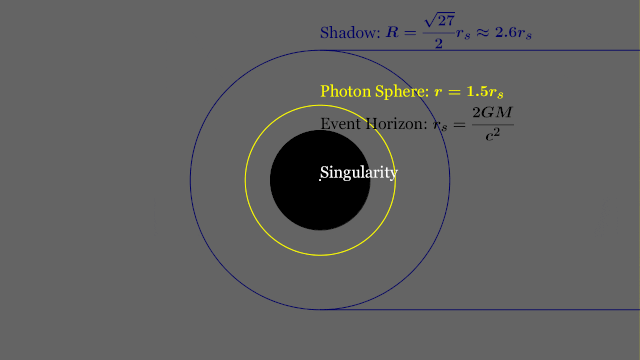


T-REX



T-REX



- Introduction
- What is a black hole?
- How do you image a black hole?
- How do you record a black hole?
- T-REX Primary Science Objectives
- T-REX (u,v) Coverage
- T-REX Engineering Challenges
- T-REX SWaPC Requirements
- T-REX Concept of Operations
- T-REX Timeline & Funding Deadlines


T-REX

M87



T-REX


SED, Sgr A*
The Supermassive Black Hole at the Galactic Center (Melia & Falcke, 2001)
The Supermassive Black Hole at the Galactic Center (Melia & Falcke, 2001)



T-REX

Spectral Energy Distribution (Sgr A*)
The Supermassive Black Hole at the Galactic Center (Melia & Falcke, 2001)
The Supermassive Black Hole at the Galactic Center (Melia & Falcke, 2001)


radio
infrared



T-REX


SED, Sgr A*
The Supermassive Black Hole at the Galactic Center (Melia & Falcke, 2001)
The Supermassive Black Hole at the Galactic Center (Melia & Falcke, 2001)



T-REX


SED, Sgr A*
The Supermassive Black Hole at the Galactic Center (Melia & Falcke, 2001)



T-REX







T-REX




T-REX


SED, Sgr A*
The Supermassive Black Hole at the Galactic Center (Melia & Falcke, 2001)



T-REX



T-REX
Knox et al., “Spatial coherence from ducks”, Physics Today, March 2010


T-REX



T-REX


T-REX







T-REX








T-REX






T-REX






T-REX





T-REX





T-REX





T-REX






T-REX




T-REX


T-REX




T-REX



T-REX



T-REX



T-REX



T-REX


T-REX


EHT


(2019)
Event Horizon Telescope (EHT)


BHEX
(2031)
Black Hole Explorer Satellite (BHEX) Mission





BHEX

- Introduction
- What is a black hole?
- How do you image a black hole?
- How do you record a black hole?
- T-REX Primary Science Objectives
- T-REX (u,v) Coverage
- T-REX Engineering Challenges
- T-REX SWaPC Requirements
- T-REX Concept of Operations
- T-REX Timeline & Funding Deadlines


T-REX

Sub-milli arcsecond angular resolution:
Dual short and long baseline lengths
Decreased signal loss from LEO
Decreased radiation environment in LEO vs. MEO





T-REX

Sub-milli arcsecond angular resolution:
Dual short and long baseline lengths
Rapid coverage of (u,v) plane
Decreased signal loss from LEO
Decreased radiation environment in LEO vs. MEO





- Time-scale of Sgr A* accretion disk: 4<T<30 minutes (0<J<1)
- Time-scale of LEO Orbit: 90 minutes, with 22-minute (u,v) coverage

T-REX

Sub-milli arcsecond angular resolution:
Dual short and long baseline lengths
Decreased signal loss from LEO
Decreased radiation environment in LEO vs. MEO





T-REX



- Introduction
- What is a black hole?
- How do you image a black hole?
- How do you record a black hole?
- T-REX Primary Science Objectives
- T-REX (u,v) Coverage
- T-REX Engineering Challenges
- T-REX SWaPC Requirements
- T-REX Concept of Operations
- T-REX Timeline & Funding Deadlines


T-REX


T-REX

Capture Time-Resolved Videos of M87 & Sgr A*

Time-Resolve Binary Black Hole Systems

Conduct VLBI Survey of AGN targets at 86 GHz



T-REX

Capture Time-Resolved Videos of M87 & Sgr A*

Time-Resolve Binary Black Hole Systems

Conduct VLBI Survey of AGN targets at 86 GHz


T-REX

Supplement (u,v) coverage at 86 GHz
Enable parameter estimation of Sgr A*/M87


Capture Time-Resolved Videos of M87 & Sgr A*



"Metrics and Motivations for Earth–Space VLBI: Time-resolving Sgr A* with the Event Horizon Telescope" Palumbo et. al. ApJ 2019

T-REX




T-REX
"Metrics and Motivations for Earth–Space VLBI: Time-resolving Sgr A* with the Event Horizon Telescope" Palumbo et. al. ApJ 2019




T-REX
"Metrics and Motivations for Earth–Space VLBI: Time-resolving Sgr A* with the Event Horizon Telescope" Palumbo et. al. ApJ 2019




T-REX


T-REX
$$\alpha=-\frac{\xi}{\sin i}, \quad \beta= \pm \sqrt{\eta+a^2 \cos ^2 i-\xi^2 \cot ^2 i}$$
$$M=\frac{c^2 D}{G} \frac{\theta_{sh}}{\mathcal{F}(a, i)}$$
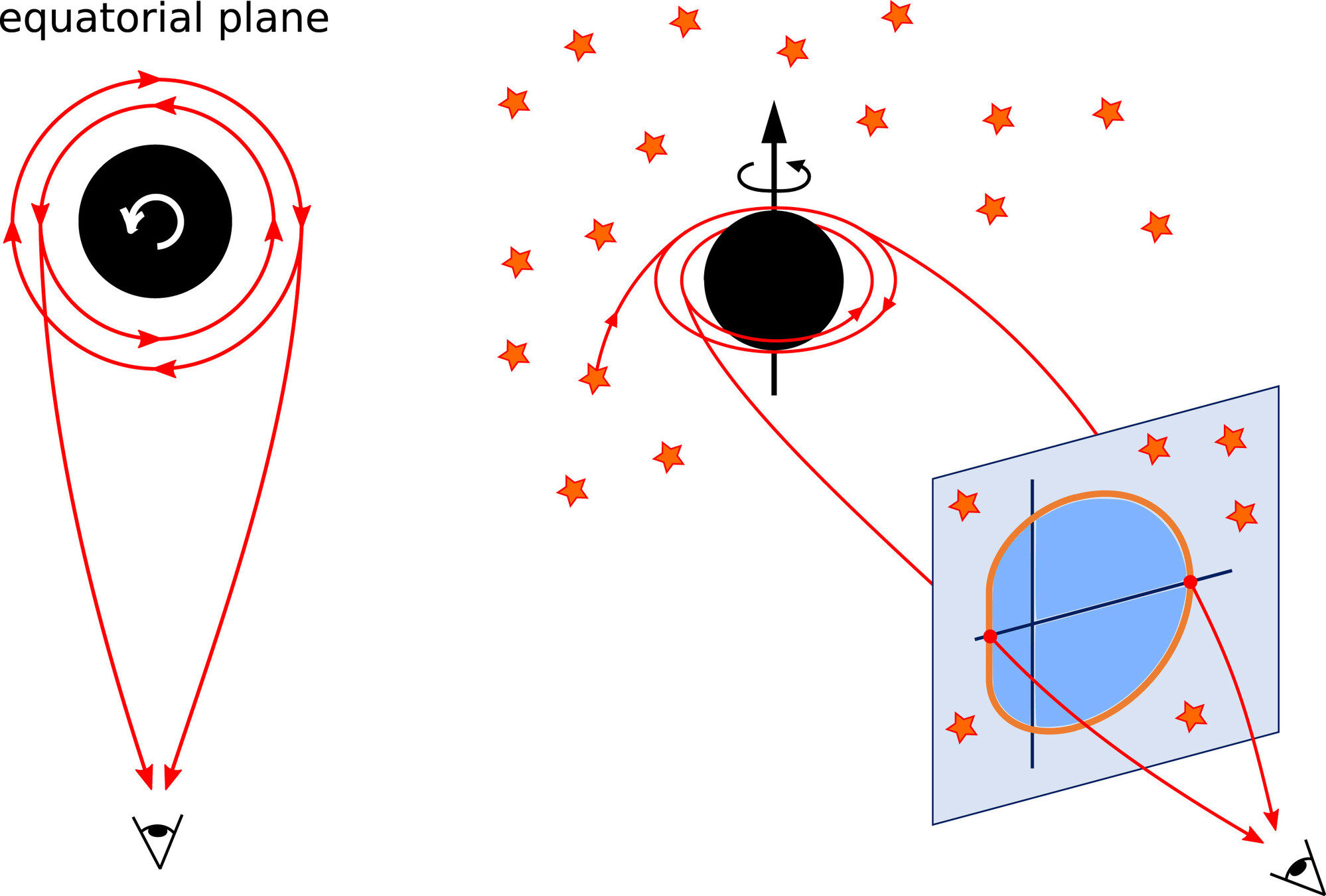


T-REX


T-REX

Supplement (u,v) coverage at 86 GHz
Enable parameter estimation of Sgr A*/M87
Achieve Space-Space VLBI




Videos of M87 & Sgr A*
"The Black Hole Explorer: Motivation and Vision" Johnson et. al. arXiv 2024


T-REX

Capture Time-Resolved Videos of M87 & Sgr A*

Time-Resolve Binary Black Hole Systems

Conduct VLBI Survey of AGN targets at 86 GHz



T-REX

Time-Resolve Binary Black Hole Systems



T-REX

Time-Resolve Binary Black Hole Systems



T-REX

Time-Resolve Binary Black Hole Systems



T-REX

Capture Time-Resolved Videos of M87 & Sgr A*

Time-Resolve Binary Black Hole Systems

Conduct VLBI Survey of AGN targets at 86 GHz



T-REX

Conduct VLBI Survey of AGN targets at 86 GHz


"The Black Hole Explorer: Motivation and Vision" Johnson et. al. arXiv 2024


T-REX


- Introduction
- What is a black hole?
- How do you image a black hole?
- How do you record a black hole?
- T-REX Primary Science Objectives
- T-REX (u,v) Coverage
- T-REX Engineering Challenges
- T-REX SWaPC Requirements
- T-REX Concept of Operations
- T-REX Timeline & Funding Deadlines


T-REX








"Metrics and Motivations for Earth–Space VLBI: Time-resolving Sgr A* with the Event Horizon Telescope" Palumbo et. al. ApJ 2019











T-REX





$$\theta$$




















$$\theta$$





















































































































Direct Detection
Heterodyne
Quantum VLBI



Direct Detection
Heterodyne
Quantum VLBI

M87



Sgr A*


10:15
11:00

8:00



Sgr A*




T-REX












T-REX






T-REX










"Imaging the event horizon of M87* from space on different timescales" Shlentsova et. al. ApJ 2024

- Introduction
- What is a black hole?
- How do you image a black hole?
- How do you record a black hole?
- T-REX Primary Science Objectives
- T-REX (u,v) Coverage
- T-REX Engineering Challenges
- T-REX SWaPC Requirements
- T-REX Concept of Operations
- T-REX Timeline & Funding Deadlines


T-REX

T-REX




Rapid (u,v) coverage
Decreased signal loss
Decreased radiation environment



Infrared Thermal Emissions
Limited Ground Coverage
Aggressive Slew Rate Required
Potential Reduced ISM Scattering





mm-wavelength angular resolution
Dual-baseline capability



T-REX




Rapid (u,v) coverage
Decreased signal loss
Decreased radiation environment



Infrared Thermal Emissions
Limited Ground Coverage
Aggressive Slew Rate Required
Potential Reduced ISM Scattering





mm-wavelength angular resolution
Dual-baseline capability



T-REX




Rapid (u,v) coverage





T-REX






Rapid (u,v) coverage


T-REX







Rapid (u,v) coverage


T-REX




Rapid (u,v) coverage



Multifrequency Black Hole Imaging for the Next-generation Event Horizon Telescope (Chael et. al., 2023, ApJ)

T-REX




Rapid (u,v) coverage
Decreased signal loss
Decreased radiation environment



Infrared Thermal Emissions
Limited Ground Coverage
Aggressive Slew Rate Required
Potential Reduced ISM Scattering





mm-wavelength angular resolution
Dual-baseline capability



T-REX




Decreased signal loss




Distance: How much distance did the signal travel through free space? (LEO vs. MEO!)

T-REX




Rapid (u,v) coverage
Decreased signal loss
Decreased radiation environment



Infrared Thermal Emissions
Limited Ground Coverage
Aggressive Slew Rate Required
Potential Reduced ISM Scattering





mm-wavelength angular resolution
Dual-baseline capability



T-REX




Rapid (u,v) coverage
Decreased signal loss
Decreased radiation environment



Infrared Thermal Emissions
Limited Ground Coverage
Aggressive Slew Rate Required
Potential Reduced ISM Scattering





mm-wavelength angular resolution
Dual-baseline capability



T-REX




Potential Reduced ISM Scattering



Prospects of Detecting a Jet in Sagittarius A* with VLBI (Chavez et. al., ApJ 2024)







Orbit design for mitigating interstellar scattering effects in Earth-space VLBI observations of Sgr A* (Aditya Tamar, Ben Hudson, Daniel C.M. Palumbo, A&A, 2025)
T-REX




Potential Reduced ISM Scattering





T-REX




Rapid (u,v) coverage
Decreased signal loss
Decreased radiation environment



Infrared Thermal Emissions
Limited Ground Coverage
Aggressive Slew Rate Required
Potential Reduced ISM Scattering





mm-wavelength resolution
Dual-baseline capability



T-REX




Rapid (u,v) coverage
Decreased signal loss
Decreased radiation environment



Infrared Thermal Emissions
Limited Ground Coverage
Aggressive Slew Rate Required
Potential Reduced ISM Scattering





mm-wavelength resolution


T-REX




Rapid (u,v) coverage
Decreased signal loss
Decreased radiation environment



Infrared Thermal Emissions
Limited Ground Coverage
Aggressive Slew Rate Required
Potential Reduced ISM Scattering





mm-wavelength resolution
Dual-baseline capability



T-REX





Dual-baseline capability



Rapid coverage of (u,v) plane
Decreased signal loss from LEO
Decreased radiation environment in LEO vs. MEO


Metrics and Motivations for Earth–Space VLBI: Time-resolving Sgr A* with the Event Horizon Telescope (Palumbo et. al., ApJ 2019)

T-REX





Dual-baseline capability



Decreased signal loss from LEO
Decreased radiation environment in LEO vs. MEO


Metrics and Motivations for Earth–Space VLBI: Time-resolving Sgr A* with the Event Horizon Telescope (Palumbo et. al., ApJ 2019)

T-REX





Dual-baseline capability




T-REX




Rapid (u,v) coverage
Decreased signal loss
Decreased radiation environment



Infrared Thermal Emissions
Limited Ground Coverage
Aggressive Slew Rate Required
Potential Reduced ISM Scattering





mm-wavelength resolution
Dual-baseline capability



T-REX




Infrared Thermal Emissions



T-REX




Rapid (u,v) coverage
Decreased signal loss
Decreased radiation environment



Infrared Thermal Emissions
Limited Ground Coverage
Aggressive Slew Rate Required
Potential Reduced ISM Scattering





mm-wavelength resolution
Dual-baseline capability



T-REX




Limited Ground Coverage


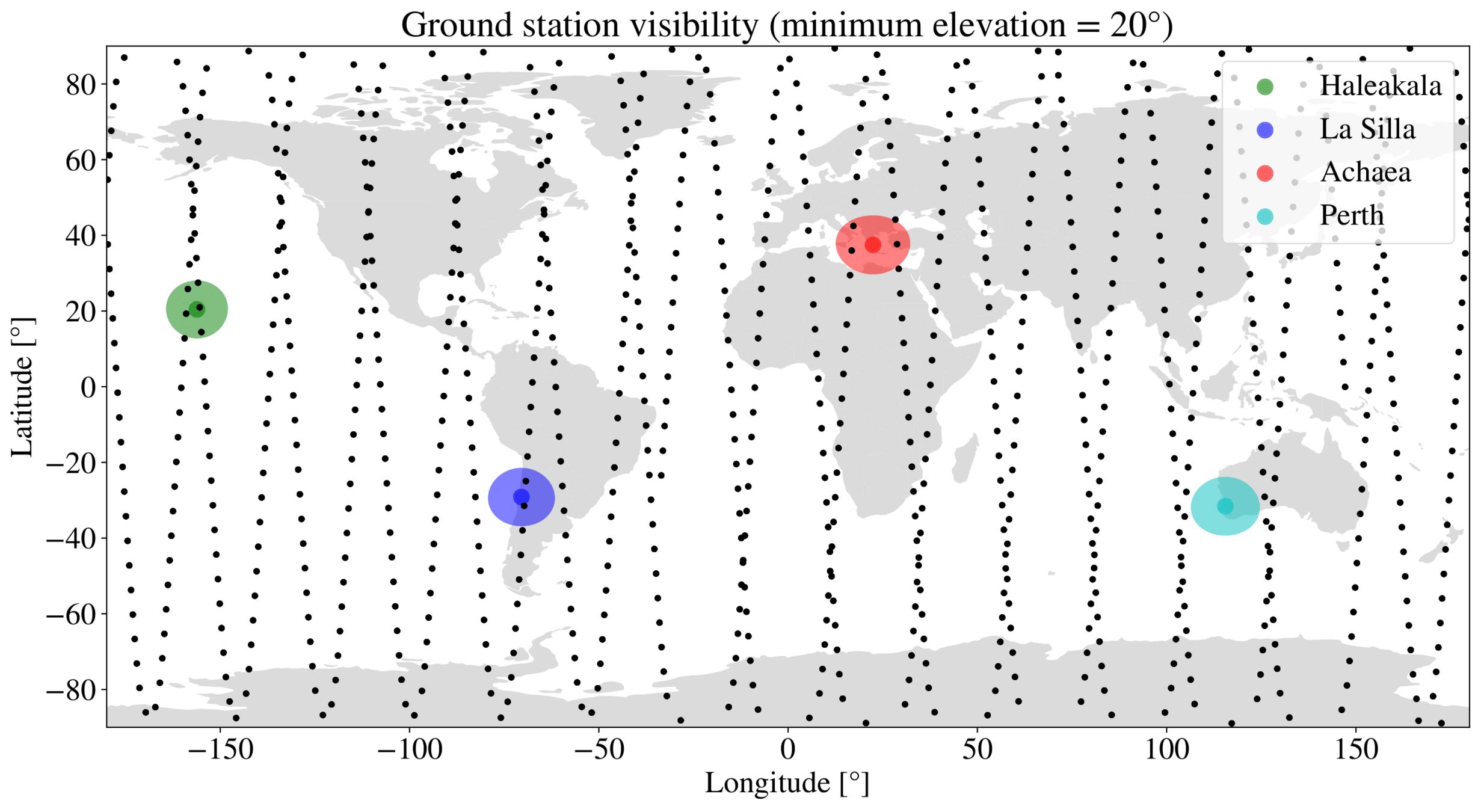

T-REX




Limited Ground Coverage





T-REX




Limited Ground Coverage



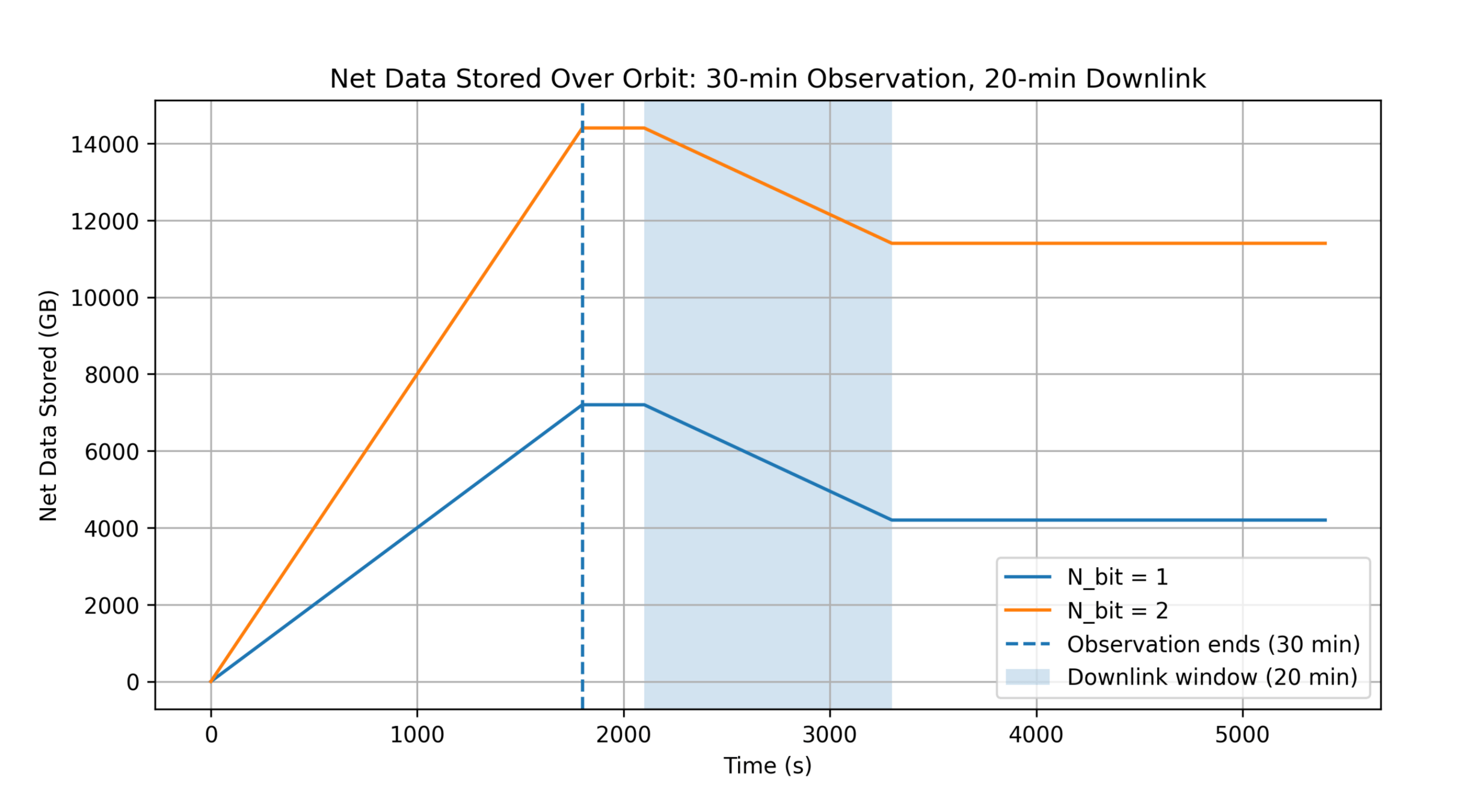
T-REX




Rapid (u,v) coverage
Decreased signal loss
Decreased radiation environment



Infrared Thermal Emissions
Limited Ground Coverage
Aggressive Slew Rate Required
Potential Reduced ISM Scattering





mm-wavelength resolution
Dual-baseline capability



T-REX




Aggressive Slew Rate Required




- Introduction
- What is a black hole?
- How do you image a black hole?
- How do you record a black hole?
- T-REX Primary Science Objectives
- T-REX (u,v) Coverage
- T-REX Engineering Challenges
- T-REX SWaPC Requirements
- T-REX Concept of Operations
- T-REX Timeline & Funding Deadlines


T-REX


T-REX



T-REX

T-REX SWaPC







Size
Weight
Power
Power
Cost



NASA Pioneers


Aspera

Pandora

StarBurst
PUEO
(Galaxy Evolution via UV)

(Exoplanet Explorer)

(Neutron Stars via Gamma Rays)

(Particle Physics via High-Energy Neutrinos)

Mission Parameters

SEFD
USO
Data
Orbit

Systems Design

SEFD

USO
Data
Orbit

Systems Design


SEFD
USO
Data
Orbit

Systems Design

SEFD
USO
Data
Orbit


Systems Design

SEFD
USO
Data
Orbit


Systems Design

SEFD
USO
Data
Orbit


Systems Design

SEFD
USO
Data
Orbit


Systems Design

SEFD
USO
Data
Orbit


Systems Design

SEFD
USO
Data
Orbit


Systems Design

SEFD
USO
Data
Orbit


Systems Design

SEFD
USO
Data
Orbit


Systems Design

SEFD
USO
Data
Orbit


Systems Design

SEFD
USO
Data
Orbit


Systems Design

SEFD
USO
Data
Orbit


Systems Design

SEFD
USO
Data
Orbit


Systems Design

SEFD
USO
Data
Orbit


Systems Design

SEFD
USO
Data
Orbit


Systems Design

SEFD
USO
Data
Orbit


Systems Design

SEFD
USO
Data
Orbit


Systems Design

SEFD
USO
Data
Orbit


Systems Design

SEFD
USO
Data
Orbit


Systems Design
SEFD
USO
Data
Orbit


Systems Design
SEFD
USO
Data
Orbit


Systems Design
SEFD
USO
Data
Orbit


Systems Design
SEFD
USO
Data
Orbit


Systems Design
SEFD
USO
Data
Orbit


Systems Design
SEFD
USO
Data
Orbit


Systems Design
SEFD
USO
Data
Orbit


T-REX



T-REX
















Antenna
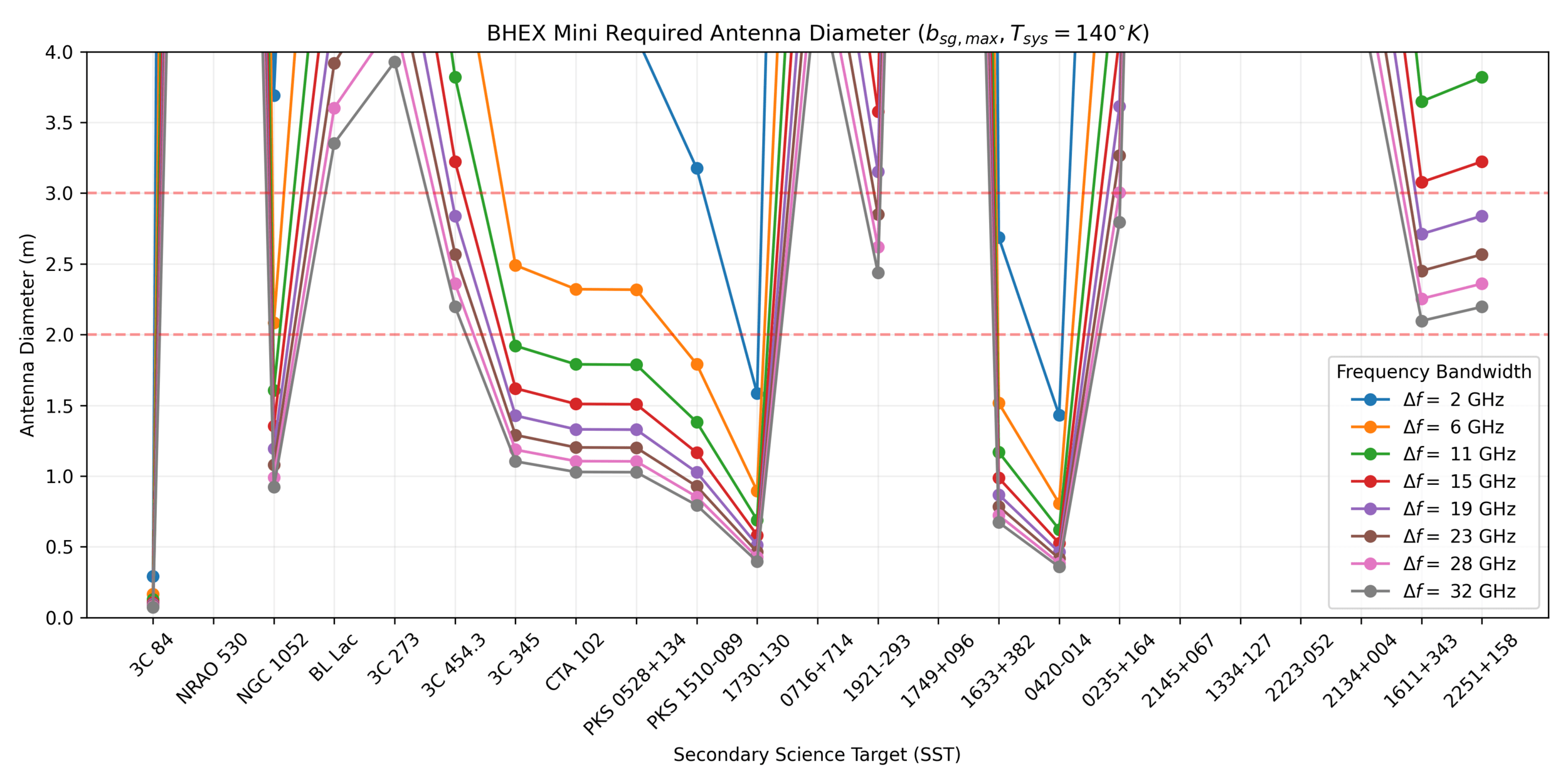
T-REX










Antenna

T-REX











Antenna
T-REX



T-REX
















Cryocooler

HiPTC Heat Intercepted Pulse Tube Cooler
T-REX



T-REX










Ultra-Stable Oscillator
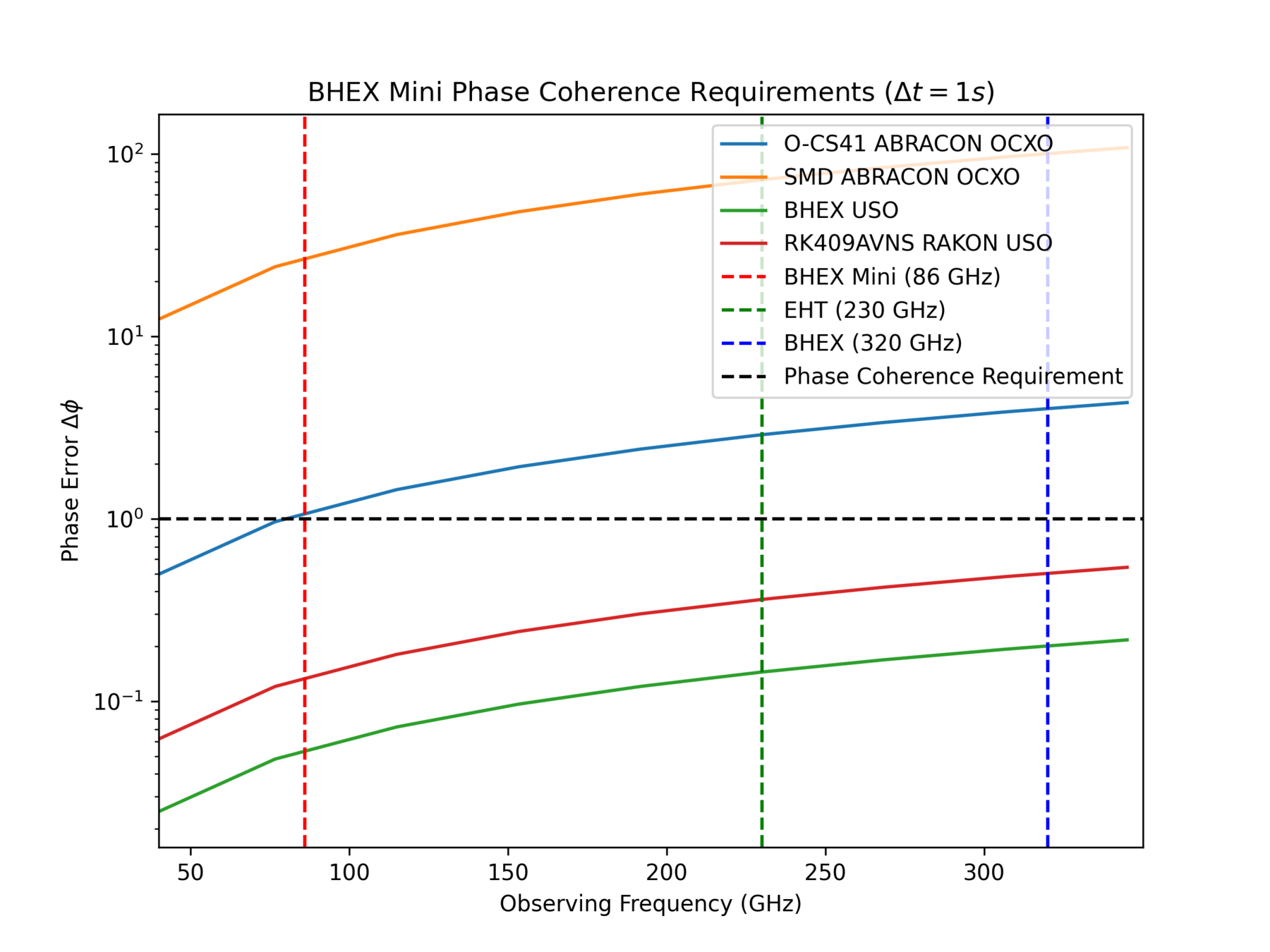

T-REX




Ultra-Stable Oscillator
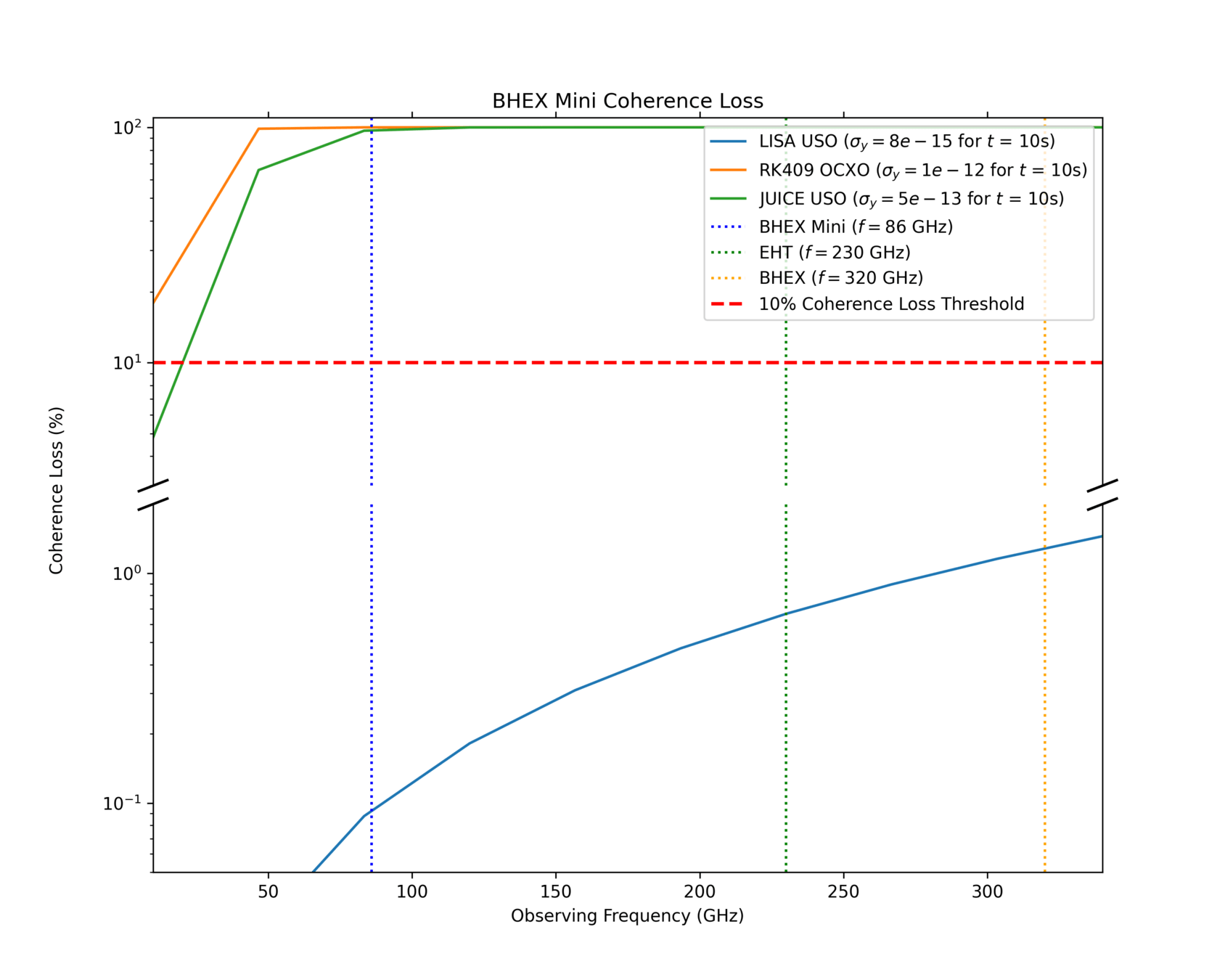
Phase Error
T-REX




Ultra-Stable Oscillator


T-REX




Ultra-Stable Oscillator
Allan Deviation

ABRACON SMD OCXO

T-REX










Digital Backend
T-REX





Original Analog Radio Signal
T-REX





Sample the Signal every Unit Interval
Nyquist-Shannon Sampling Theorem
T-REX





Retain only the samples and record the sign of the voltage for each sample
T-REX




Reconstruct the original signal

T-REX


T-REX








T-REX




- Introduction
- What is a black hole?
- How do you image a black hole?
- How do you record a black hole?
- T-REX Primary Science Objectives
- T-REX (u,v) Coverage
- T-REX Engineering Challenges
- T-REX SWaPC Requirements
- T-REX Concept of Operations
- T-REX Timeline & Funding Deadlines

T-REX


T-REX ConOps

Optical Terminals
RF Tracking Stations


VLBI Ground Stations






T-REX Data Center




Optical Terminals
RF Tracking Stations


VLBI Ground Stations






T-REX Data Center

- Introduction
- What is a black hole?
- How do you image a black hole?
- How do you record a black hole?
- T-REX Primary Science Objectives
- T-REX (u,v) Coverage
- T-REX Engineering Challenges
- T-REX SWaPC Requirements
- T-REX Concept of Operations
- T-REX Timeline & Funding Deadlines

T-REX


- Email BHEX Team
Jan 2025
T-REX


- Email BHEX Team
Jan 2025

T-REX


- Email BHEX Team
Jan 2025


T-REX


- Email BHEX Team
Jan 2025
Feb 2025
- Literature Review



T-REX


- Email BHEX Team
Jan 2025
Feb 2025
Mar 2025
- Literature Review
- Advised on BHEX Mini by Prof. Rick Fleeter
- Submit to Rhode Island Space Grant


Rick Fleeter
T-REX


- Email BHEX Team
Jan 2025
Feb 2025
Mar 2025
- Literature Review
Apr 2025
- Ivy Space Conference
- Ben Hudson (BHEX, KISPE)
- Luke Anderson (Orion Space Systems)

Ben Hudson

Luke Anderson
- Advised on BHEX Mini by Prof. Rick Fleeter
- Submit to Rhode Island Space Grant
T-REX


- Email BHEX Team
Jan 2025
Feb 2025
Mar 2025
- Literature Review
Apr 2025
May 2025
- Ivy Space Conference
- Ben Hudson (BHEX, KISPE)
- Luke Anderson (Orion Space Systems)
- Trained ~6 undergraduates to run simulations on BHEX Mini
- Jeffrey Olson (Cryocooler Engineer, Lockheed Martin

Jeffrey Olson
- Advised on BHEX Mini by Prof. Rick Fleeter
- Submit to Rhode Island Space Grant
T-REX


Jun 2025
Jul 2025
- Completed Antenna SWaPC Requirements
- Obtained Preliminary Grant Funding from Nelson Center
- Began correspondence with NASA JPL on Ultrastable Oscillators
- Constrained BHEX Mini SWaPC Requirements
- Approved by Brown Division of Research as PI for BHEX Mini
- Submitted to NASA NIAC Phase I Solicitation
- Accepted to SmallSat Europe 2026







Todd Ely
Joseph Lazio
Eric Burt
- Email BHEX Team
Jan 2025
Feb 2025
Mar 2025
- Literature Review
Apr 2025
May 2025
Jun 2025
Jul 2025
- Ivy Space Conference
- Ben Hudson (BHEX, KISPE)
- Luke Anderson (Orion Space Systems)
- Trained ~6 undergraduates to run simulations on BHEX Mini
- Jeffrey Olson (Cryocooler Engineer, Lockheed Martin)
- Rejected from RISG
- Completed Antenna SWaPC Requirements
- Obtained Preliminary Grant Funding from Nelson Center
- Began correspondence with NASA JPL on Space-Space VLBI
- Constrained BHEX Mini SWaPC Requirements
- Approved by Brown Division of Research as PI for BHEX Mini
- Submitted to NASA NIAC Phase I Solicitation
- Accepted to SmallSat Europe 2026

- Advised on BHEX Mini by Prof. Rick Fleeter
- Submit to Rhode Island Space Grant
Feb 2025
Mar 2025
- Literature Review
Apr 2025
May 2025
Jun 2025
Jul 2025
- Ivy Space Conference
- Ben Hudson (BHEX, KISPE)
- Luke Anderson (Orion Space Systems)
- Trained ~6 undergraduates to run simulations on BHEX Mini
- Jeffrey Olson (Cryocooler Engineer, Lockheed Martin)
- Rejected from RISG
- Completed Antenna SWaPC Requirements
- Obtained Preliminary Grant Funding from Nelson Center
- Began correspondence with NASA JPL on Space-Space VLBI
- Rejected from International Astronautical Congress
- Constrained BHEX Mini SWaPC Requirements
- Approved by Brown Division of Research as PI for BHEX Mini
- Submitted to NASA NIAC Phase I Solicitation
- Accepted to SmallSat Europe 2026
- Advised on BHEX Mini by Prof. Rick Fleeter
- Submit to Rhode Island Space Grant
- Meeting with MIT Lincoln Labs (8/15)
- Colloquium at Princeton IAS (9/04)
- Michael Johnson Colloquium at Brown (PI, BHEX) (9/22)
- Assemble Science/Engineering Leadership Team for NASA / CSA
Aug 2025
Sep 2025
- Accepted as NASA NIAC Finalist
- Accepted to 10th International VLBI Conference (Sweden)
- Accepted to Gravitational Wave Conference (Georgia Tech)





💰Funding Deadlines

June
💰Funding Deadlines
$5,000

-
Brown Nelson Grants
- Submitted: June 30
- Decision: Sep 15

July
💰Funding Deadlines
$5,000


$175,000
-
Brown Nelson Grants
- Submitted: June 30
- Decision: Sep 15
-
NASA NIAC Phase I
- Submitted: July 15
- Decision: Sep 6

Aug
💰Funding Deadlines
$5,000


$175,000
>$4M

-
Brown Nelson Grants
- Submitted: June 30
- Decision: Sep 15
-
NASA NIAC Phase I
- Submitted: July 15
- Decision: Sep 6
-
Templeton Grant
- Submitted: Aug 15
- Decision: Oct 10

Sep
💰Funding Deadlines
$5,000


$175,000
>$4M


-
Brown Nelson Grants
- Submitted: June 30
- Decision: Sep 15
-
NASA NIAC Phase I
- Submitted: July 15
- Decision: Sep 6
-
Templeton Grant
- Submitted: Aug 15
- Decision: Oct 10
-
AAS Splinter Meeting
- Submitted: Sep 25
- Decision: Oct 30

Oct
💰Funding Deadlines
$5,000


-
NASA NIAC Phase I
- Submitted: July 15
- Decision: Sep 6
$175,000
-
Brown Nelson Grants
- Submitted: June 30
- Decision: Sep 15
>$4M

-
Templeton Grant
- Submitted: Aug 15
- Decision: Oct 10

-
AAS Abstracts
- Submitted: Sep 25
- Decision: Oct 30

-
CSA FAST Grant
- Submitted: Oct 26
- Decision: Dec 15
>$400,000

- Introduction
- What is a black hole?
- How do you image a black hole?
- How do you record a black hole?
- T-REX Primary Science Objectives
- T-REX (u,v) Coverage
- T-REX Engineering Challenges
- T-REX SWaPC Requirements
- T-REX Concept of Operations
- The Request


T-REX

T-REX NASA NIAC Diagrams
By Ref Bari
T-REX NASA NIAC Diagrams
- 36



